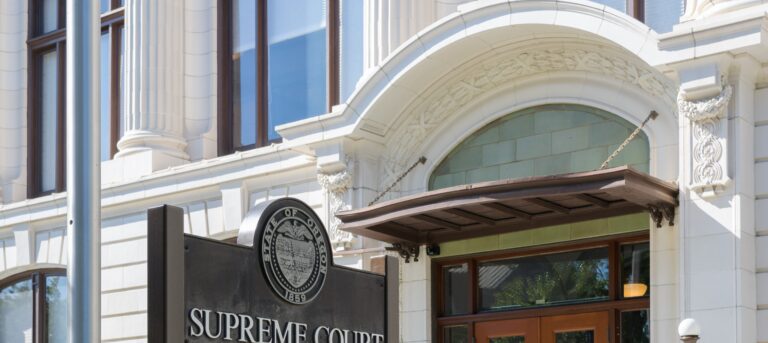The Action Accrues at Breach: The Oregon Court of Appeals Refuses to Apply the Discovery Rule to Breach of Contract Cases
From the Desk of Mike Staskiews: In this recent Oregon Court of Appeals case, the Court addressed what seemed to be a split among two lines of case law regarding when the statute of limitations “accrues” in certain breach of contract actions.
Claims Pointer:
The Oregon Supreme Court’s 2014 decision in Rice v. Rabb generated some controversy for its holding that ORS 12.080(4) incorporated a discovery rule. Litigators have since questioned whether the Court of Appeals or Supreme Court was poised to rule that breach of contract claims under 12.080(1) were also subject to a discovery rule, overturning nearly 80 years of preceding case law that explicitly held that the statute of limitation for breach of contract claims begins to run at breach. In this recent Oregon Court of Appeals case, the Court heldthat the six-year statute of limitations for breach of contract actions pursuant to ORS 12.080(1) is still not subject to the discovery rule and that an action accrues at the breach of the contract.
Romero v. Amburn, 323 Or. App. 410 (2022)
Facts:
In 2007 Defendant built a spec home and Plaintiff bought the house later that same year. Nine and a half years later, in October 2017, Plaintiff learned that the house had not been constructed properly resulting in extensive water intrusion and damage.
In April 2018, Plaintiff brought an action seeking $162,000 in damages based on claims of negligence and breach of contract. Plaintiff alleged that under the contract, Defendant was required to provide a “habitable residence free of material defects” and that Defendant’s delivery of a defective house was a breach of the sales contract. Plaintiff also alleged that the defective condition of the house had been hidden and that the plaintiff was “entirely unaware” of the defects until the damage occurred in 2017.
Defendant moved for summary judgment, arguing that Plaintiff’s breach of contract claim was barred by the six-year statute of limitations in ORS 12.080, and that the limitations period had begun to run at the time of the breach, that is, at the time of the sale of the defective house.
Plaintiff countered that a “discovery rule” applied, that the limitations period did not begin until Plaintiff knew or should have known of the defects, and that a question of fact existed as to when Plaintiff should have discovered the defects.
Relying on Waxman v. Waxman & Associates, Inc., 224 Or App 499, 198 P.3d 445 (2008), in which the Oregon Court of Appeals rejected a “virtually identical” argument to Plaintiff’s, the trial court held that the “discovery rule” did not apply in this situation, and that Plaintiff had missed the 6-year statute of limitations period. Accordingly, the trial court granted Defendant’s motion for summary judgment.
Plaintiff appealed the summary judgment ruling on the breach of contract claims, arguing that Waxman, and its subsequent case line,had been implicitly overruled by the Oregon Supreme Court in Rice v. Rabb, 354 Or. 721, 320 P.3d 554 (2014), and that therefore the discovery rule applied to ORS 12.080(1).
Law:
ORS 12.080(1) states that certain types of contract claims must be brought within 6 years.
In the same chapter, ORS 12.010 provides that actions shall only be commenced within the period prescribed in their respective statutes after the cause of action has accrued.
Reading the two statutes together, contract actions under ORS 12.080 should be brought within 6 years of when the cause of action, the breach, accrues.
For over 50 years, Oregon case law has established that a breach of contract action accrues at the time of breach, triggering the statute of limitations. See Pierce v. Pierce, 153 Or 248, 253, 56 P2d 336 (1936); Seattle-First Nat’l Bk. V. Ore. Pac. Ind., 262 Or 578, 583 500 P3d 1033 (1972); Waxman v. Waxman & Associates, Inc., 224 Or App 499, 198 P.3d 445 (2008).
However, a concept known as the discovery rule has been interpreted to toll the statute of limitations under certain statutes until the cause of action has been “discovered” by a Plaintiff. The discovery rule is “a rule of interpretation of statutes of limitation that has the effect of tolling the commencement of such statutes under certain circumstances.” Rice, 354 Or. at 725, 320 P.3d 554. When applicable, the discovery rule tolls the statute of limitations so that the countdown to bring a claim begins to run on either (1) the date of the plaintiff’s discovery of the injuries/damages or (2) the date when a reasonably careful person should have discovered those injuries/damages, whichever comes first. Id.
Analysis:
The parties both agreed that the relevant statute of limitations for the contract at issue was articulated in ORS 12.080, which states that an action based on this type of contract must be commenced within 6 years. The issue on appeal was when the contract action “accrued” to start the 6-year countdown, and if all actions under ORS 12.010 were subject to the discovery rule.
The Court of Appeals began its analysis by stating that whether the discovery rule applies to a particular statute of limitations is a question of statutory construction, and the key inquiry is whether the legislature intended for the discovery rule to be read into ORS 12.010 or ORS 12.080.
For their analysis, the Court reviewed over 80 years of case law and identified two lines of law that seemed to be at tension when discerning when the statute of limitations runs under ORS 12.080. The first line of cases, which the Court dubbed the Vega/Waxman cases, firmly established that a breach of contract claim accrues at the time of breach. However, the Court also identified a second line of case law, called the Berry/Rice cases, which “developed in parallel” to the first line. The Berry/Rice case line articulated that the discovery rule applies in cases involving tort causes of action, brought under ORS 12.080(4), and that such causes of action would not “accrue” until the Plaintiff knew, or reasonably should have known, that the tort had been committed.
To this end, Plaintiff argued that the Berry/Rice cases explicitly overruled the Vega/Waxman cases, arguing that the Berry/Rice cases determined that all actions under ORS 12.010 were subject to the discovery rule and that, therefore, the present contract action at issue would not have “accrued” until Plaintiff discovered, or could have reasonably discovered, the defect in the house.
Defendant responded that the Berry/Rice cases primarily involved tort claims, not contract claims, and that the Berry/Rice line of cases were not intended to overrule the Vega/Waxman line.
Ultimately, the Court ruled the two lines of case law were consistent and that the Berry/Rice cases did not overrule the Vega/Waxman line. In their opinion, the Court stated that issuing a ruling that Berry/Rice implicitly overruled Vega/Waxman was too major a shift in contract law for the Court of Appeals to initiate.
Moreover, while the Court acknowledged that there was potential tension between the Vega/Waxman line and the Berry/Rice line, the Court believed that the two lines of case law could still “coexist,” finding that both case lines held that the causes of action found in ORS 12.080 had to be read together with ORS 12.010 to determine that their 6-year statutes of limitation began at accrual. The Court reasoned that the main difference between the case lines was simply that they assigned different definitions of “accrual” to different causes of action (contract v. tort).
Although the Court did note that the Supreme Court may decide to clarify this issue in a way that overrules Vega/Waxman, such a step had not yet been taken, and that “[a]s long as there is a legitimate possibility of reconciling the two lines of cases, [the Court of Appeals] cannot say that one implicitly overruled the other.”
Accordingly, the Court held that the statute of limitations in ORS 12.080(1) was not subject to the discovery rule, the Plaintiff’s contract claims were time-barred under ORS 12.080(1), and the trial court did not err when it granted Defendant’s motion for summary judgement.
Big Picture:
The Court of Appeals declined to initiate a major shift in Oregon contract law but left open the possibility that the Oregon Supreme Court may do so. Careful attention should be paid to the aftermath of this case to see if the Supreme Court decides to clarify this issue.

















